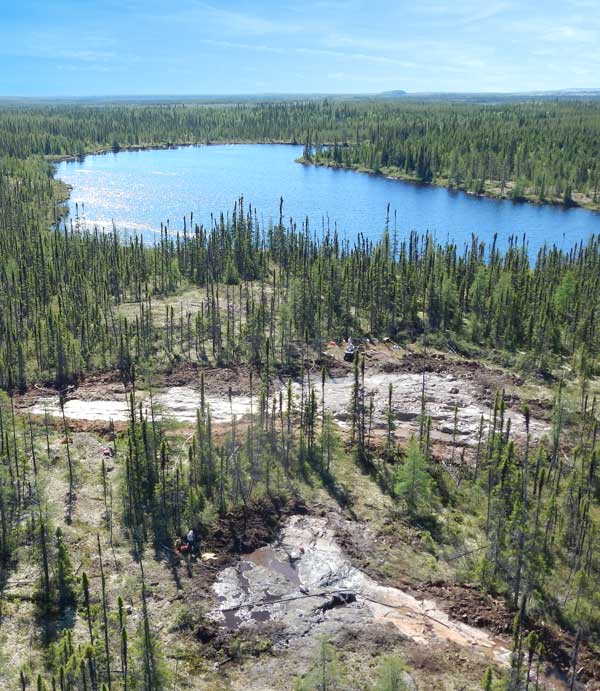Iron ore price back below $50 after Chinese property shock

A sticky situation
After a two day surge the spot price of iron ore slipped back on Wednesday following dismal economic news from top consumer of the steelmaking ingredient China.
The 62% Fe import price including freight and insurance at the Chinese port of Tianjin lost $0.40 or 0.8% to $49.70 a tonne on Wednesday. Iron ore remains down nearly 30% this year, after a 47% decline over the course of 2014.
Economic growth data released on Wednesday showed first quarter GDP in China, which consumes more than 70% of the world’s seaborne iron ore trade, expanding at the slowest rate since the height of the global financial crisis.
While the overall economic expansion of 7% – the second-worst quarterly growth since 2000 – was anticipated, the property sector continued to deteriorate.
Residential property sales fell 9% compared to 2014 while inventories of unsold residential property rose a whopping 24%. The country’s property sector accounts for almost half of all steel demand and nearly 60% of its copper demand.
The slump in the price of iron ore has prompted top exporter Australia’s Treasurer Joe Hockey to seek high level talks with his Chinese counterpart reports Bloomberg:
“I will be speaking with the Chinese finance minister in Washington about expected demand for iron ore over the next 12-months and beyond,” Hockey told reporters in New York. “Obviously we don’t control commodity prices, but I think everyone has a responsibility to ensure that our supply to key markets is consistent, predictable and reliable.”
“Frankly, when you have an iron ore price that has dropped as dramatically as it has in the last 12 to 18 months, we’ve got to build shock absorbers into our system to cope with it,” Hockey said, who is in the U.S. to attend a meeting of Group of 20 finance ministers.
While Chinese demand has played a role in the price declines, it remains fairly robust.
China imported 80.5 million tonnes in March, an 18.5% jump from the previous month. While seasonal factors played a huge part in the recovery from February, first quarter shipments managed to eke out a 2% gain from 2014’s already record setting pace.
Most analysts have laid the blame for the weakness on the supply side. Led by the Big 3, iron ore miners invested north of $100 billion in new projects and expansions since the start of the decade.
Rio Tinto is on target to reach 330 million tonnes this year, 35 million tonnes more than 2014. The world’s number two producer has a goal for 360 million tonnes per year by 2017. BHP Billiton’s capacity will reach 225 million tonnes in 2015 with longer term ambitions in excess of 300 million tonnes.
Vale is expected to ship 340 million tonnes this year, more than 20 million tonnes greater than last year. After lagging the expansion of Australian producers during the height of the boom, the Brazilian giant is catching up fast with its longer term ambitions of over 400 million tonnes a year.
Outside the big three, growth has been just as rapid.
Fortescue Metals have hit targeted production of 165 million tonnes per year while Anglo American last year started production at its 26 million tonnes per annum Minas Rio mine in Brazil.
And there’s more to come: Unlisted miner Hancock Prospecting’s Roy Hill project in Australia could start shipping 55 million tonnes-a-year as early as September this year.
More News
California start-up launches next-generation magnesium production technology
May 28, 2025 | 03:09 pm
{{ commodity.name }}
{{ post.title }}
{{ post.date }}


3 Comments
Donatella
I don’t think Hockey will get much sympathy from the Chinese. The big three iron ore suppliers weren’t concerned about the impact on the Chinese when they arbitrarily increased prices 20% or 30% a number of times a year during the boom years.
Altaf Rahman
Why no one thought about the Shock Absorbers when prices were going up by 20-30% pa for many years? They might have created a reserve from those fat profits. That was a Shock Absorber which would have come in handy when prices are falling, like now.
Mike
I am amazed that any organisation charged with formalising State and/or Federal budgets could contemplate a base price for iron ore at $150+/tonne. Who ever did these forecasts demonstrated a gross ignorance in the commodities market and the cyclical nature of the business. Next excuse will be the need for a gold price greater than $1050/oz.–when 20 years ago ,it was fixed at $32.40/oz.